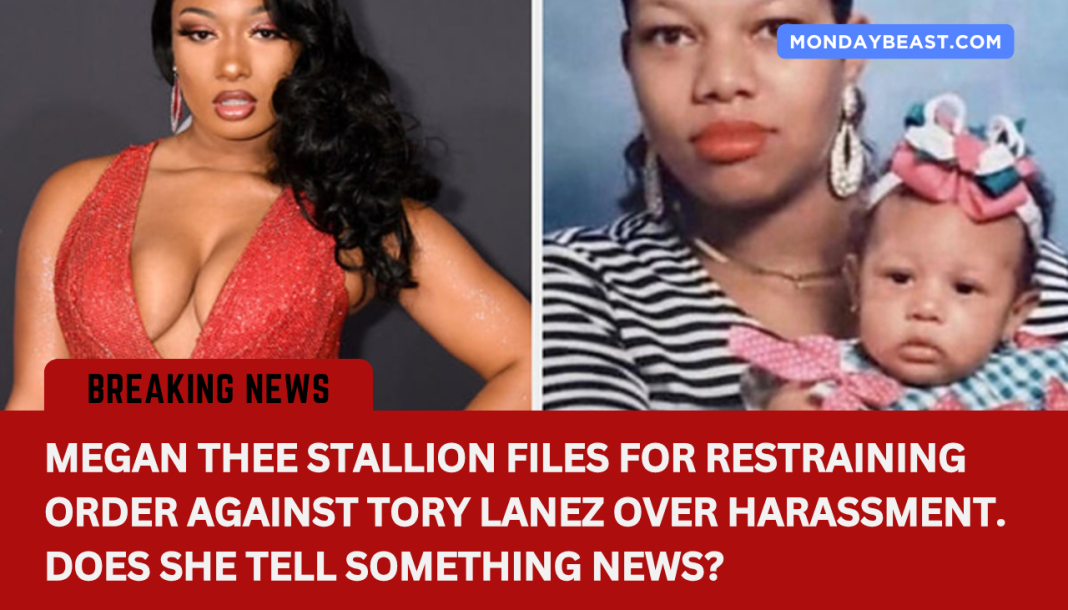Megan Files for a Restraining Order
Megan Thee Stallion’s decision to seek a restraining order against Tory Lanez has opened a floodgate of emotions and discussions. The rapper, known for her empowering lyrics and fierce independence, now faces an unsettling reality. With Lanez behind bars serving a 10-year sentence, she alleges that he continues to harass her, demonstrating just how complicated trauma can be, even long after the initial incident.
Imagine living in constant fear. After a traumatic event, one might expect peace to settle in. Yet Megan’s recent court filing reveals that the shadowy figure of Lanez still looms large over her life. The substantial 194-page document paints Lanez as a “violent and dangerous criminal.” It raises troubling questions about the effective measures in protecting victims from their aggressors. How does one truly heal when the source of pain seems relentless?
The Nature of Harassment

These allegations are not just words on paper. They carry weight and severity. Megan’s lawyers assert that Lanez maintains an “established pattern of behavior,” revealing a troubling history. This isn’t merely a matter of legalities; it’s about emotional and psychological torment. This situation brings a harsh reality into focus: even with a protective order, the trauma remains, and the fear can be debilitating.
Megan’s concern, as detailed in court filings, is haunting. She states, ‘I am left without protection at a time where I need it most.’ This sentiment resonates with countless individuals who feel powerless against their perpetrators. The specter of Lanez’s potential release sparks worries about safety and what lies ahead. How can anyone feel secure when the past refuses to stay buried?
Megan’s Ongoing Battle
Megan’s struggle is not only a legal issue but also deeply personal. In her recently released documentary, she reveals the extent of her trauma. ‘I thought I could be the Megan I always wanted to be,’ she confesses, implying that freedom has eluded her. Each day brings new challenges, as negativity from those who don’t understand her past continues to erupt. This highlights an ongoing societal issue: the dismissal or misunderstanding of victims’ experiences. Why does victim-blaming persist in our culture?

Historically, victims have often faced scrutiny. Megan courageously shares her story and attempts to reclaim her narrative. Yet, facing harassment through proxies, as alleged in her filings, compounds her emotional burden. It raises questions about accountability and vigilantism in our digital age. Are we aware of the impact our online actions can have on someone’s mental health?
The Role of Social Media
The court documents mention Lanez allegedly using third-party bloggers to spread falsehoods about her, which adds another layer to the already complicated narrative. The internet can amplify voices, both good and bad. It serves as a powerful platform—but it can also be a weapon. Megan’s experience showcases the darker side of fame: when your vulnerabilities become fodder for others’ entertainment or agendas.
Elizabeth Milagro Cooper, mentioned as one of Lanez’s alleged proxies, serves as an example of how social media can blur lines. It’s chilling to think that individuals may be manipulated to perpetuate harassment. How can we combat this wave of cruelty and support victims instead? Perhaps the answer lies in education and spreading awareness.
Seeking Closure

Megan’s legal journey is more than a fight for a restraining order. It symbolizes a bigger quest for safety, security, and, ultimately, closure. As she navigates this tumultuous path, one can’t help but wonder—how many others experience similar battles hidden beneath the glimmer of stardom?
Healing from trauma is never linear. For Megan, this reality is painfully evident. Her desire for normalcy is thwarted at every turn by an unyielding past. The emotional scars linger, showcasing the complexities of overcoming abuse. How do we, as a community, foster environments where victims feel supported and valued?
This case serves as a poignant reminder of the challenges victims face long after the headlines fade. Megan’s story echoes in the hearts of many, prompting important conversations about justice, healing, and the role of society in fostering safety for those who have suffered. Her fight is a call to action—a plea for understanding and empathy as she attempts to reclaim her life from the depths of trauma.




